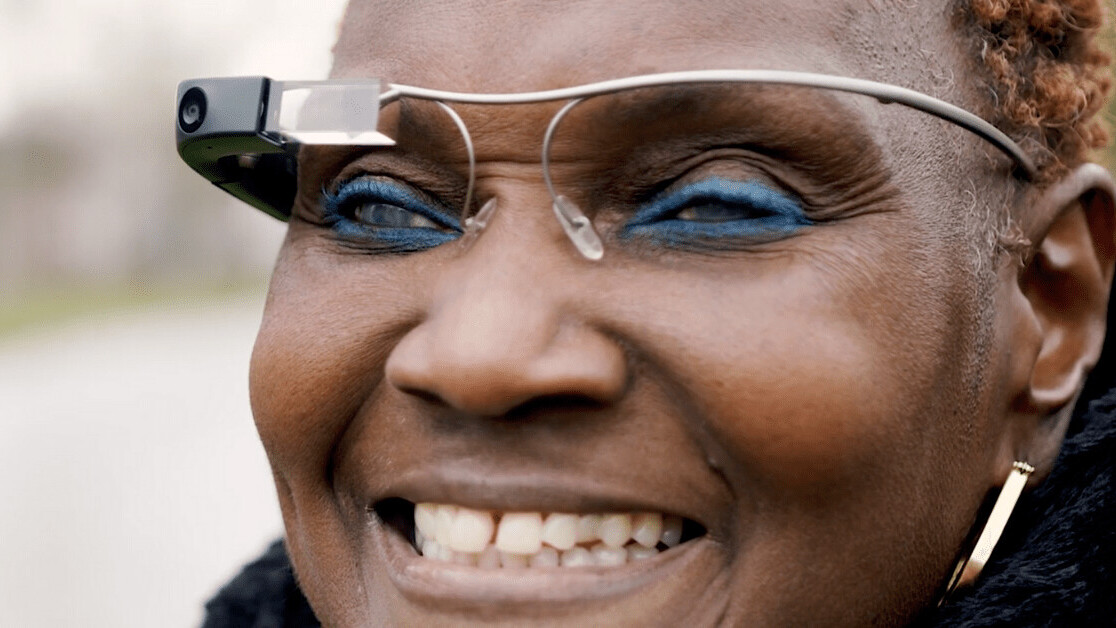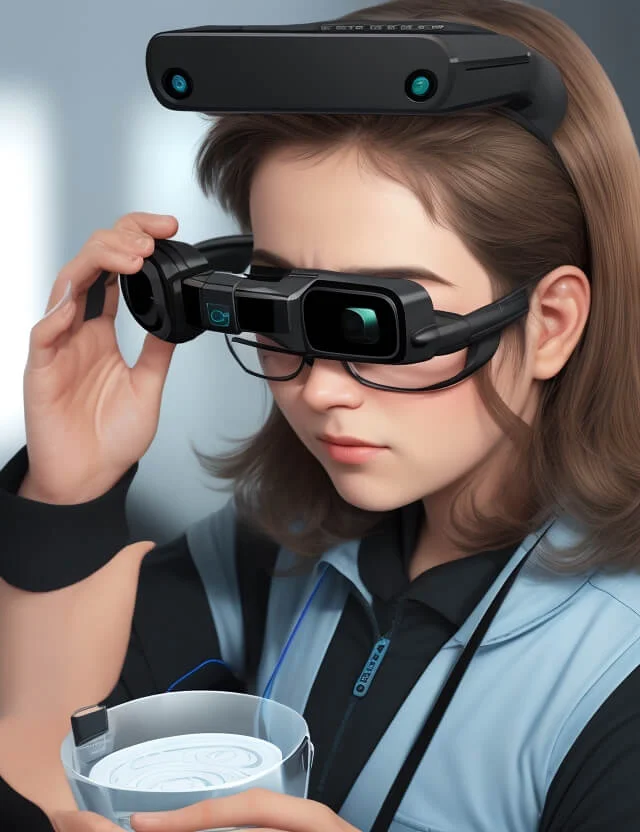Ingenious Solutions in Assistive Modern Technology for Visual Problems
The landscape of assistive modern technology for aesthetic disability is developing rapidly, offering a variety of innovative remedies that improve ease of access and independence. From innovative smartphone applications that promote navigation to wearable devices created for real-time assistance, these devices are reshaping the experiences of those with aesthetic impairments.
Innovations in Mobile Phone Applications
Over the last few years, improvements in smartphone applications have actually significantly changed the landscape of assistive technology for people with aesthetic disabilities. These applications utilize the powerful sensors and capacities of modern smart devices to provide individuals with tools that enhance freedom and accessibility in their day-to-days live.
Remarkable among these innovations are applications created for things recognition, which use the smart device's camera to determine things and provide verbal summaries. Such attributes empower users to navigate their settings better, whether determining items in shops or locating personal possessions in your home. In addition, text-to-speech applications have actually improved drastically, making it possible for customers to capture printed text through their gadget's cam and get split second sound responses, therefore facilitating reading and comprehension.
Navigation applications tailored for visually impaired users have also arised, offering auditory advice and thorough location info. These tools supply important assistance for flexibility, permitting individuals to pass through unknown areas with confidence. Additionally, community-driven applications have fostered social communication and source sharing among individuals with visual problems, developing a helpful network that improves their lifestyle. Overall, smartphone applications have actually ended up being important allies in promoting freedom and availability for individuals with aesthetic disabilities.
Wearable Gadgets for Navigating
Wearable gadgets for navigating have become a groundbreaking service for people with visual disabilities, using hands-free aid that improves flexibility and orientation. These devices usually utilize innovative innovations, consisting of GPS, ultrasonic sensors, and expert system, to supply real-time comments and instructions to users as they browse their setting.
One remarkable example of wearable navigating technology is wise glasses, which can detect obstacles and relay auditory or haptic comments to the wearer, enabling secure and reliable activity in numerous setups. Various other tools, such as belts and vests outfitted with sensing units, can in a similar way educate customers of their environments by giving signals concerning neighboring things or adjustments in surface.
Furthermore, numerous wearable gadgets integrate with smartphone applications, enabling customers to tailor their navigating preferences and get tailored course suggestions. This personalization can significantly boost the customer experience, encouraging individuals to travel with better self-confidence and self-reliance.
As technology remains to create, the capacity for wearable navigation tools to enhance the lifestyle for people with aesthetic disabilities remains substantial, leading the method for more available and comprehensive atmospheres.
Smart Home Innovation Assimilation

Furthermore, wise devices geared up with responsive user interfaces or acoustic feedback supply instinctive interactions that cater particularly to the demands of those with aesthetic impairments. Wise fridges can introduce their materials and expiry days, while smart ovens can direct individuals with the food preparation procedure with audio guidelines.
Home automation systems, such as clever buzzers and protection cameras, offer satisfaction by allowing users to receive notifies and gain access to live feeds through their mobile phones, improving personal security (AI-powered visual aids). Furthermore, combination with tablets and smartphones ensures that users can handle their home setting from anywhere within their properties
As wise home innovation continues to develop, it holds the potential to transform the living experiences of people with aesthetic disabilities, fostering self-reliance and enhancing lifestyle in an increasingly linked globe.

Educational Devices and Resources
Accessibility to efficient educational tools and sources is vital for individuals with aesthetic problems, as it equips see here now them to engage totally in their discovering experiences. Various assistive modern technologies have actually been established to enhance access and foster independent discovering. Screen viewers, as an example, transform text into speech, enabling students to accessibility digital web content effortlessly. AI-powered visual aids. Additionally, refreshable braille display screens offer responsive comments, making it easier for students to interact with created material. helpful hints
Moreover, academic software particularly made for visually impaired customers offers functions such as high-contrast settings and personalized text sizes. These devices accommodate diverse discovering designs and make sure that pupils can tailor their academic experience to their demands.
Furthermore, access to electronic libraries and audio publications increases the series of available discovering products, enabling trainees to check out subjects in depth without the restrictions enforced by traditional print resources. Collective systems that integrate availability attributes additionally facilitate group projects, guaranteeing that visually impaired students can contribute meaningfully alongside their peers.
Community Support and Engagement
A robust network of community support and engagement is important for individuals with visual impairments, fostering a comprehensive setting where they can grow. Area companies, local advocacy teams, and volunteers play a crucial function in supplying resources, information, and companionship, which are essential for optometrist license number boosting the top quality of life for those impacted by visual impairments.
Engagement activities such as workshops, get-togethers, and support groups not only promote skill advancement yet additionally promote social interaction, lowering sensations of isolation. These efforts motivate people to share successes, difficulties, and experiences, consequently reinforcing community bonds. Additionally, partnerships with regional services can bring about greater accessibility in public areas, additionally incorporating people with aesthetic problems right into the area.
Technology also enhances community engagement through online platforms that use online support groups and sources, permitting people to link no matter of geographical barriers. By taking advantage of both in-person and electronic options, neighborhoods can produce an extensive support network. Ultimately, fostering collaboration amongst numerous stakeholders-- consisting of households, educators, and healthcare professionals-- makes certain that people with visual impairments receive the all natural assistance required to navigate every day life properly and with self-respect.
Conclusion
Innovative remedies in assistive innovation for visual impairment dramatically improve the high quality of life for individuals encountering these difficulties. The integration of smart device applications, wearable gadgets, smart home modern technology, and academic devices promotes greater freedom and availability. Neighborhood assistance and interaction more equip aesthetically impaired people, promoting inclusivity and engagement in different facets of life. Collectively, these improvements not only change day-to-day experiences however additionally lead the way for an extra equitable culture.
The landscape of assistive modern technology for aesthetic impairment is developing swiftly, offering a range of ingenious solutions that enhance ease of access and self-reliance. Community-driven applications have actually fostered social communication and source sharing amongst individuals with aesthetic problems, creating a supportive network that improves their high quality of life. On the whole, smart device applications have actually become essential allies in promoting autonomy and availability for people with aesthetic problems.
Many individuals with visual impairments are finding greater freedom via the assimilation of clever home modern technology.Cutting-edge remedies in assistive modern technology for aesthetic problems substantially improve the high quality of life for individuals facing these challenges.